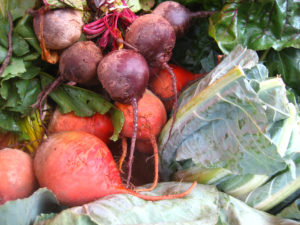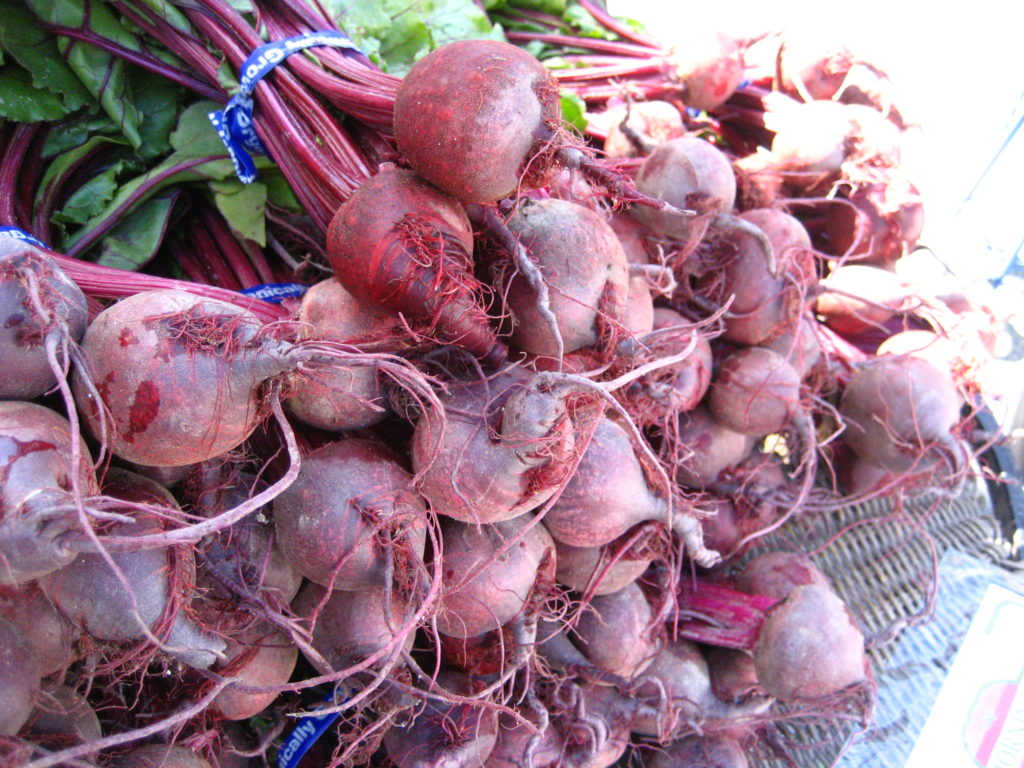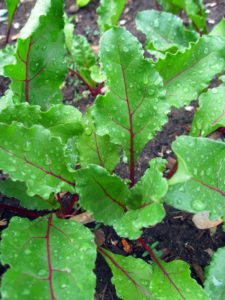Beets, or beetroot as they’re called across the pond, are interesting vegetables because everyone has an opinion about them. Some people love the earthy sweet flavors, while others cannot stand them. Red beets are the most commonly grown variety, but there are also golden beets and white beets that have a nuttier flavor. The greens of beets taste a lot like their relatives, chard, and spinach. Beets can be steamed, boiled, or served raw. Beets are also very healthy for you, they contain high amounts of potassium, magnesium, B vitamins, and are a great source of antioxidants. Sugar beets are a beet hybrid that can be grown in your garden and turned into homemade brown sugar!
There are many popular varieties of beets. The red heirlooms include well known varieties such as Red, Ball, Sweetheart, and Detroit Dark Red. Golden heirlooms are preferred by those who dislike the strong flavor of red beets. There are also crossbred cultivars such as the Warrior, Gladiator, and Big Red beets.
Planting Beets

Beets are annuals that prefer full sun but can grow in partial shade. The soil should be neutral or slightly acidic, 6.0 – 7.0 pH. If you’re starting beets from seed, plant them half an inch deep and with three inches between each seed. For transplants dig two inches deep, or just deep enough to plant the entire clump of roots, with three to four inches between each plant. Rows for seeds and transplants should be spaced twelve inches apart. Beets are also very easy to grow in containers. Beets require large pots, at least 10-12 inches across and deep, so their roots can fully develop.
Beets prefer cooler weather and should be planted during early Spring or Autumn. They can be planted in growing zones 2-10. The soil should be nutrient rich, utilizing natural compost but try and avoid too much nitrogen in the soil as it will cause the greens to grow better than the roots. One thing that beets love is boron. Boron is found naturally in Mediterranean soil, but if you live elsewhere you may need to add some boron to your soil. A simple way to add boron to your soil is with Borax or sodium borate. Mix a teaspoon or slightly less into a gallon of water, which is enough for a 100 square foot garden, and spray evenly. Boron is a naturally occurring chemical and will not damage your soil in low quantities.
Great companion plants for beets include bush beans, cabbage, lettuce, onions, radishes, and Brussels sprouts.
Harvesting Beets
Harvesting your beets happens 55-70 days after germination. Harvest the roots when they’re a little bit larger than a golf call. When the beets get too large, they grow tough and wood-like. Gently loosen the soil around the roots and pull the beets. The greens can be harvested any time after they are at least 6 inches in length. If you do harvest the greens, keep in mind the roots will not fully mature if you harvest all the greens.

While storing your beets, they can last about a week in the fridge. Beets can be stored longer in a cool box of dry sand as long as the beets are not touching. If the beets begin to sprout, that might be a sign of poor storage. Beets can also be blanched, frozen, pickled, or canned!
Beets Pests and Diseases
Cercospora leaf spot is a fungus that thrives in humid conditions. It leaves brown and red circles on the leaves and turns them grey. Applying a copper-based fungicide if caught early can help minimize damage to your beets, but if the leaf spot has progressed too far, it will need to be destroyed and the soil will need to be rotated.

Mosaic virus will create rings of yellow, green, and white and cause the leaves to be stunted and distorted. Mosaic is usually carried by aphids, so controlling aphid population is the best preventative measure. Also choosing virus resistant seed can help. Once your beets are infected, they will need to be destroyed.
Flea beetles will bore tiny holes into the leaves. Native plants that bring in predatory insects like ladybugs will help control flea beetles.
Leaf miners’ tunnel through the leaves and leave blisters. Removing infected leaves and applying an insecticidal soap should help control leaf miners.
Beet Garden Planning
If you’re looking to plant beets in your garden, use our garden planner Hortisketch to give the beets a “test drive” before planting outside. Hortisketch makes it easy to plan your entire property and garden. Start planting beets in your garden today!

Contact Author
 info@gardensavvy.com
info@gardensavvy.com Recent Posts
- Smart Gardening: How Technology Is Revolutionizing Horticulture
- Understanding Gardening Zones: What You Need to Know
- The Right Tools For Your Gardening And Landscaping Needs
- Maximizing Your Harvest: Square Foot Gardening Chart for Beginners
- Holiday Garden Scents: Plants for Natural Aromatherapy in Your Home









